Vegetables to plant in September: 12 crops to sow and grow this month
Discover the best vegetables to plant in September, and stock up on arugula, wok broc, radishes and collard greens
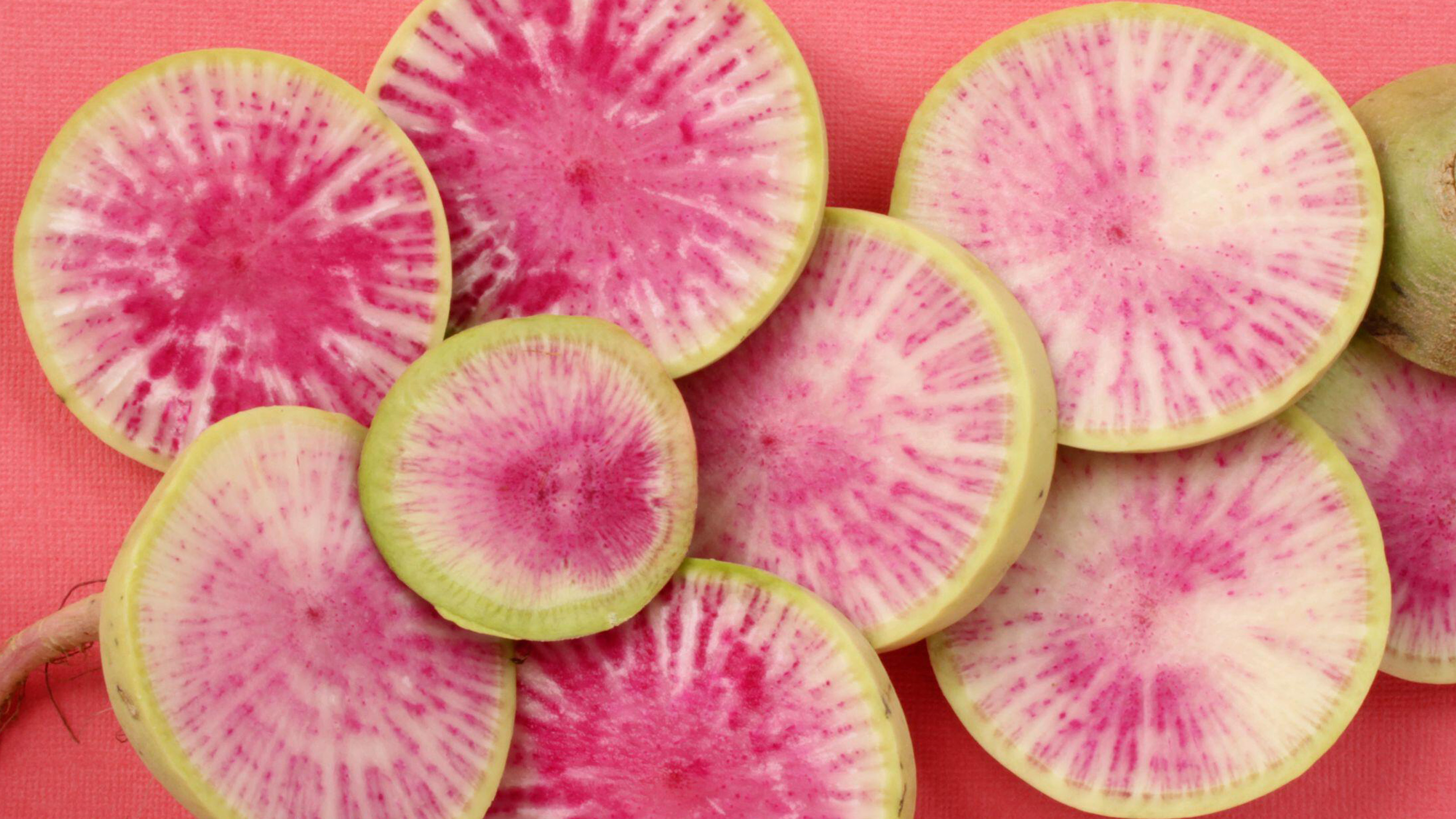

Choosing the best vegetables to plant in September is all about recognizing the shifting of the seasons – and embracing the benefits of those changes. Yes, spring is great for potential, and summer is lovely for reaping the rewards in big volumes. But in the fall, you get a magical blend of possibilities: fast-growing crops that hit their stride in the cooler temperatures of the fall; miniature (or baby) crops of slow-growing roots; and overwintering staples that bulk up steadily during the next few months in readiness for the next gardening season.
Around the autumn equinox, you lose a bit of light as well as warmth. But pick the right crops and you can turn this point in the vegetable planting calendar to your advantage. Sow savory greens, oriental leaves, spring cabbage and Japanese onions now, and they will flourish in the combination of cooler temperatures and relatively warm ground levels. Quick-maturing crops like radishes that might have taken four weeks from seed to harvest in summer might take a few weeks longer – but it’s worth it. And slow-developing brassicas like spring cabbage relish every week of growth now to bulk up to their full potential and flavor.
With containers, cold frames and cloches at the ready, you can start off a stack of lip-smacking goodies now for healthy feasts far into the colder months. Whether you’re looking to bulk up on baby roots and hardy greens or try your hand at tasty oriental veg, we’ve got the essential growing list to give your kitchen garden a boost.
12 vegetables to plant in September for weeks of delicious crops
The best vegetables to plant in September take advantage of cool-season temperatures and every last moment of daylight. Try fast-maturing leafy dynamos like arugula, mustard and pak choi, as well as baby crops of slower-maturing turnips and radishes.
Some of the best veg to start now will also set you up for filling up your store cupboard and laying the groundwork for next year’s feasts, like Japanese onions and spring cabbage. Whether you’re sowing for quick nibbles or winter goodies, our top crops will keep your raised garden bed ideas and container planting schemes ticking over well into the fall. So go on, get growing!
1. Collard greens
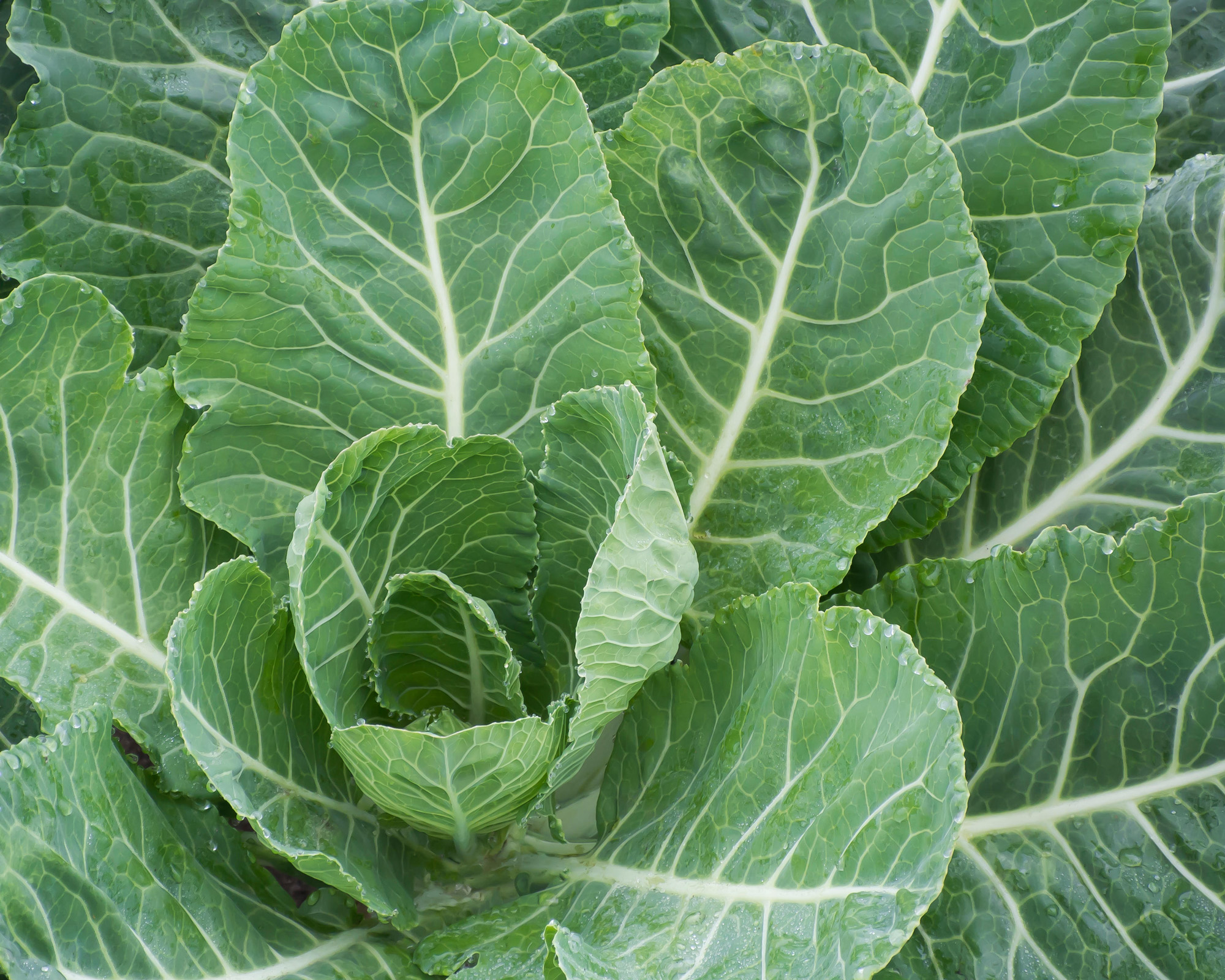
Collard greens like ‘Champion’ fill a kitchen garden with leafy goodness through the winter months
Fall is fast becoming the favorite time for growing collard greens, making them some of the best vegetables to plant in September. Beloved of the ancient Greeks, these hale and hearty leafy beasts taste better after a bit of exposure to frosts on the plot, so they are ideal for autumnal planting. Verdant, robust and reminiscent of cabbage, collards (Brassica oleracea) are packed with vitamins K, A and C, calcium and B6, and they help to lower cholesterol. Start now and make successive sowings to maximize cropping potential into the depths of winter.
These greens can be planted in the ground and in raised beds as well as containers, but bear in mind that cruciferous collards need a fair bit of room for bulking up. Plant in full sun or partial shade (USDA zones 6-11) in moist, rich, well-draining soil with a slightly acidic pH (6.5). Space 18-24in (45-60cm) apart, or thin accordingly.
A 3in (8cm) mulch will keep the ground moist and prevent weeds. Cool-season collards make excellent companion plants for onions as well as mint, rosemary and sage. If you already grow potatoes and celery, it’s also worth planting some collards nearby.
As long as these leafy greens receive a regular supply of moisture, they are ready for harvesting 65-75 days after sowing/planting. If they have been touched by frost, young leaves taste sweeter and work well steamed or braised. Try glossy ‘Green Glaze’, prolific ‘Flash’, heirloom ‘Ole Timey Blue’ and tender ‘Champion’.
2. Japanese onions
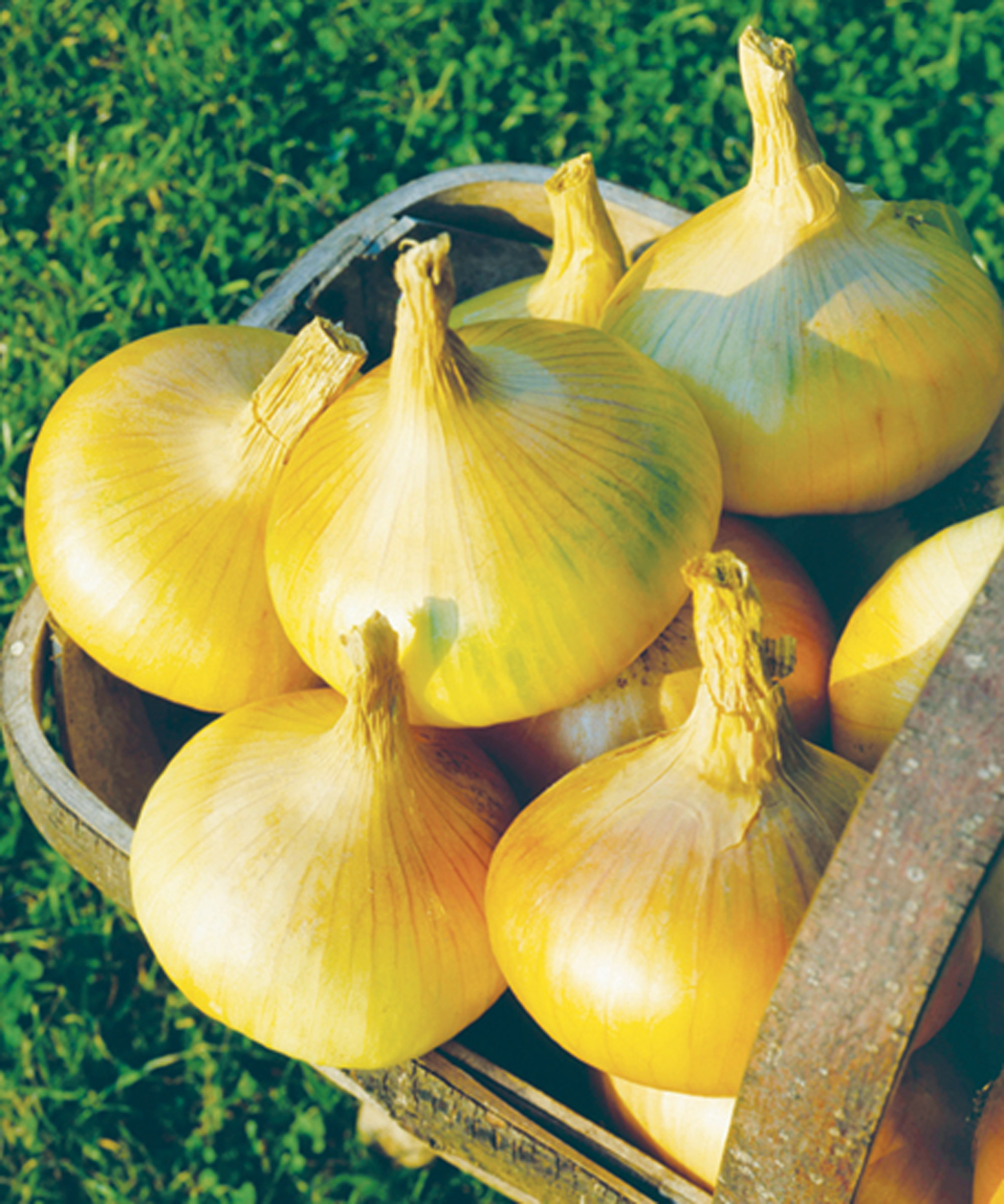
Try ‘Senshyu Yellow’ for a heavy yielding globe onion that will thrive in low temperatures
If you haven’t grown Japanese onions before, you’re in for a treat. These hardy overwintering varieties, also known simply as autumn planting onions, can grow outside over the cooler months and deliver crunchy pungent goodness come spring. What makes them so perfect for September plantings is that they need less light than other onions, so the shorter days won’t faze them.
They are also excellent options for starting in September thanks to their tolerance of the cooler climes. As Chris Bonnett of GardeningExpress.co.uk points out: ‘Onions are tough enough to withstand the cold weather throughout the winter. Just keep an eye on them, and if the conditions get too frosty, you can always cover them with a fleece to be on the safe side.’
If you’re stuck on what variety to choose, ‘Senshyu Yellow’ is a reliable, heavy yielding globe variety that can survive temperatures down to -18°C. ‘Toughball’ has good tolerance to botrytis and downy mildew, which you need for an overwintering type. Then there’s the shiny red-skinned ‘Electric’, which keeps for up to four weeks from harvest. Plus, there's ‘Troy’ and ‘Radar’, which have excellent bolt resistance.
3. Baby turnips

Striking purple and white turnip 'Purple Top Milan' combines fast growth with flat-shaped roots
Turnips are one of the fastest-growing vegetables to plant in September. These crunchy wonders do best in cool, moist conditions. You’d be amazed how quickly you can harvest golf-ball sized baby veg. ‘If planted now, they take around six weeks until they’re ready to harvest. Perfect – and just in time for winter,’ says Chris Bonnett.
Sow seeds thinly in shallow drills, ½in (1cm) deep, with rows 12in (30cm) apart. Thin out seedlings until 8in (20cm) apart for baby roots. Water regularly, or roots won’t taste as nice or grow sufficiently. Dry conditions can cause plants to bolt, which stops roots growing. Then just make sure you follow our tips on how to get rid of weeds to ensure they don't appear and encroach on your growing turnips.
Flea beetles and other small insects may make small holes in young turnip greens. You can get rid of flea beetles by growing the crops under insect-proof mesh or horticultural fleece. Don’t worry, though – turnip plants are so quick-growing, they soon outpace any damage.
Just keep the soil lightly moist, and your baby roots will be healthy and yummy. Try 'Tokyo Cross', 'White Lady', 'Purple Top Milan' and 'Hakurei'.
4. Arugula (rocket)
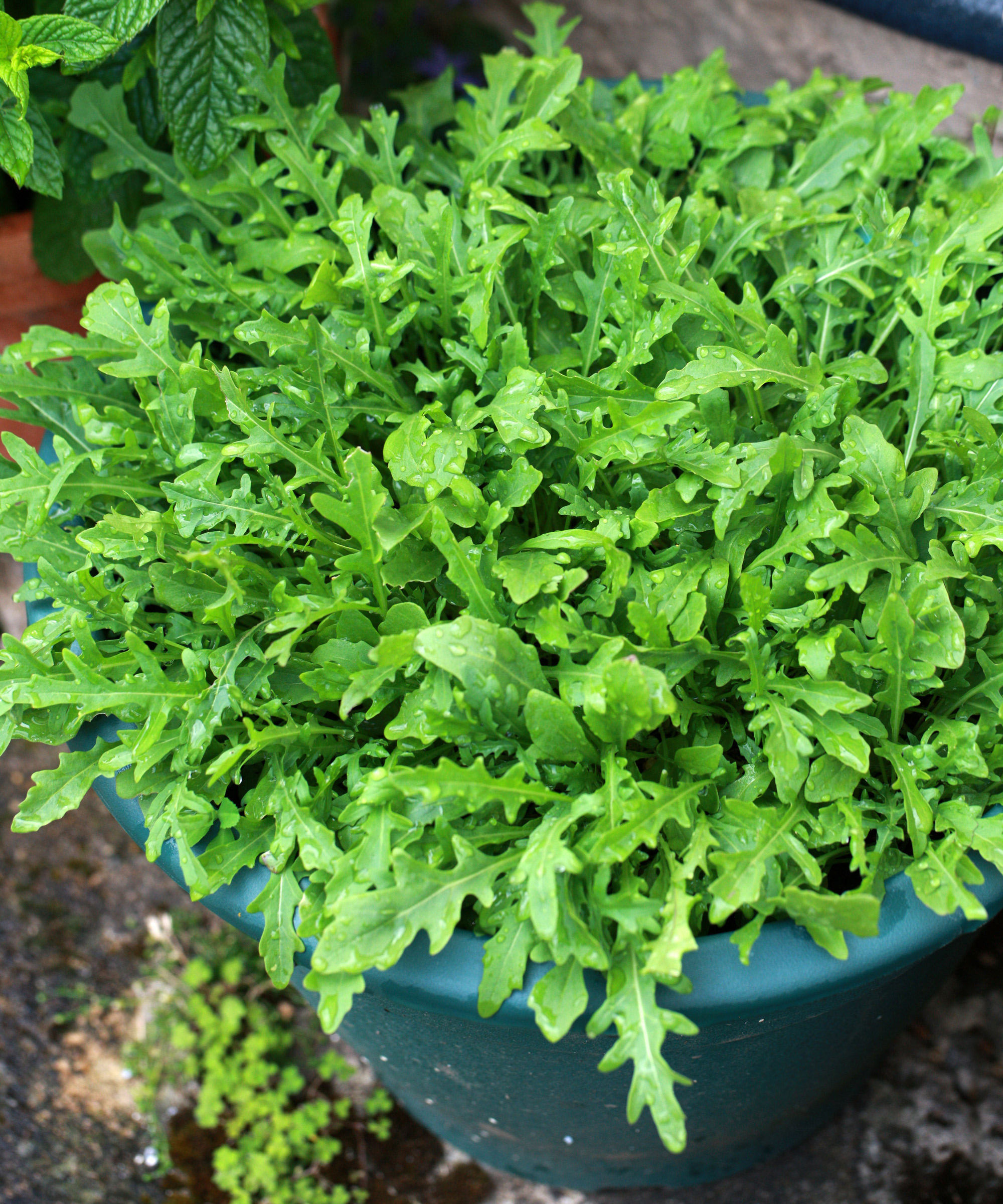
Arugula (or rocket) is the cool-season crop that delivers a kick in the flavor stakes
Arugula (or rocket) is highly adaptable to a cool season of cultivation. Easily sown from seed, this lobed leafy annual cranks up the heat with tasty crops that can be harvested four weeks after sowing. Its fast maturity makes it amongst the best veggies for September planting – and successive sowing ensures feisty flavors far into winter.
As Amateur Gardening’s veg expert Lucy Chamberlain explains, the still-warm days of autumn are perfect for rapid germination. 'Just sow straight into the greenhouse border, or into modules in a propagator to transplant to the border, trays or growing bags in October,' says Lucy.
It prefers full sun or partial shade with well-drained soil (pH 6-7). Once you have thinned seedlings to 4-6in (10-15cm) apart, these plants just need regular watering due to their shallow root systems. They are ideal for companion planting with slower-maturing veggies like French beans, carrots and beetroots. Arugula will also make great companion plants for potatoes and aromatic herbs like chives and dill. Hardiness zones 3-11 get the best results for outdoor growing, but these spicy staples thrive wherever warm germination conditions are followed by exposure to the cold, moisture and six hours of light per day.
Depending on the varieties, you can harvest as quickly as 40 days after sowing (four-seven weeks): young, tender leaves are best. Just leave two thirds of each plant intact for multiple harvests. Lovely breeds include red-veined ‘Red Dragon’, heirloom ‘Slow Bolt’ and frilly ‘Garden Tangy’.
5. Wok broc
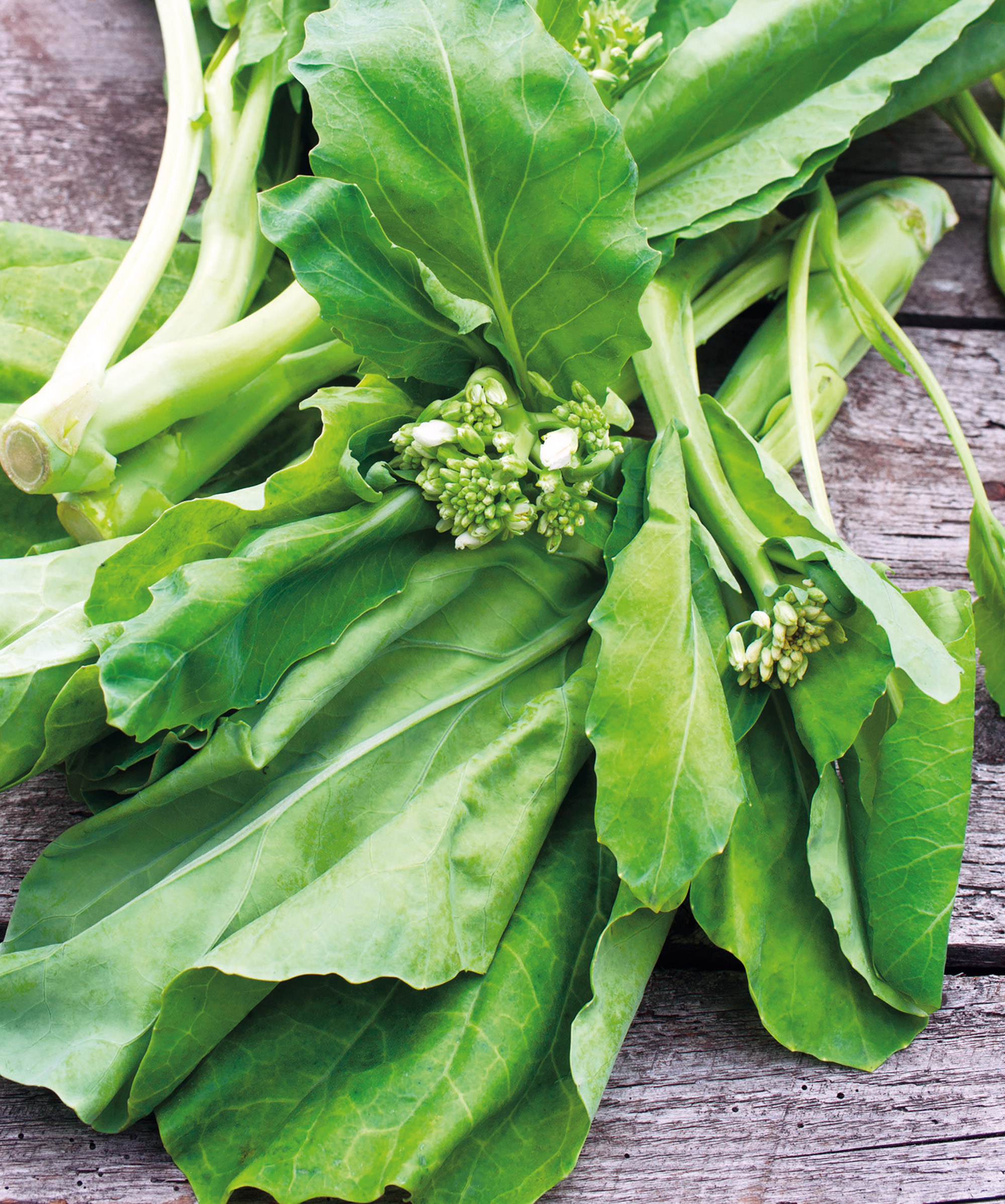
Tasty wok broc 'Kichi' from Suttons is a perfect cut-and-come-again crop to start off in September
Although it sounds a little bit like a vegetarian metal band, wok broc (aka Chinese broccoli) is a great vegetable to plant in September. This exotic-sounding crop, also known as kai lan, is a bit like conventional sprouting broccoli. It’s fast-growing, hard-working and packed with antioxidants and vitamin C. Anyone who has tried to grow winter brassicas or superfoods such as kale will love this unusual crop.
Sow directly into moist, weed-free soil in an open, sunny site. Drop the seeds into a 1in (2.5cm) deep trench, or scatter across the surface of large pots. Thin to 12in (30cm) apart when seedlings are large enough to handle. Water well and make sure the growing area remains weed-free. Because this crop is fast-growing, you can harvest stems and leaves six-eight weeks after sowing. Remove a few centimeters of the stems when the flowers appear. We recommend you leave a few flowers on the plant, though – they are great for pollinators.
6. Mustard leaves
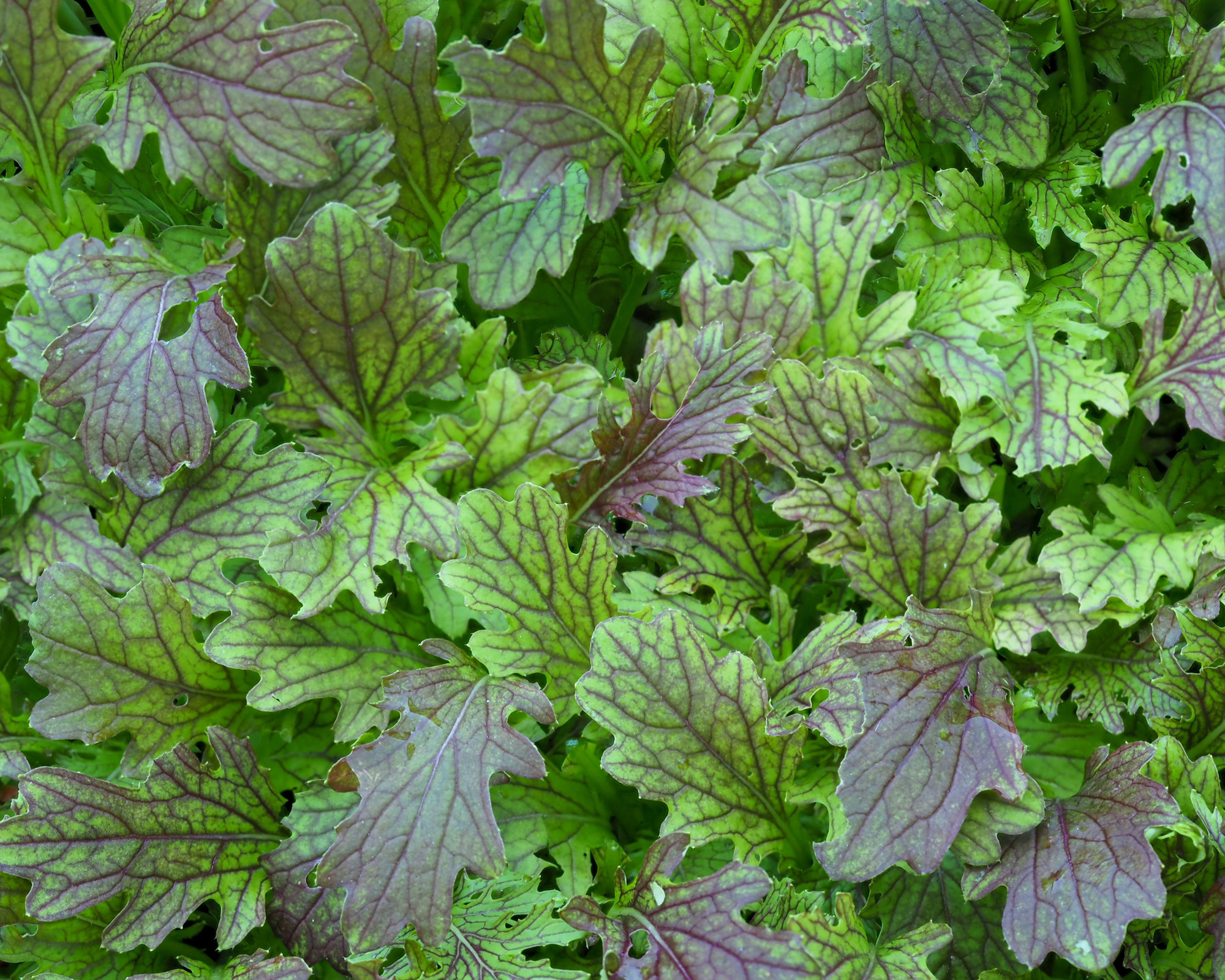
Mustard ‘Red Dragon’ is a prolific, fast-growing salad staple and an excellent cut-and-come-again crop
Leafy Asian vegetables create a diverse array of crops for fall plantings. Along with those that add pep to salads and sandwiches, Lucy advises filling bare gaps with some fast-growing hardy breeds for stir-fries and sautées. Mustard leaves are some of the most impactful vegetables to plant in September as they bulk up quickly from seed, make the most of small spaces (ideally in zones 2-11) and thrive in damp conditions. They are some of the easiest vegetables to grow from seed. And if you sow every three weeks, they will supply you with tender pickings all winter.
‘Simply sow directly into moist soil (pH 6-7). As temperatures fall, cover with a cloche, which prevents foliage turning leathery in colder weather,’ says Lucy. Alternatively, grow in large shallow containers. As seedlings develop, thin to 3in (8cm) apart, and water well. As long as you plant in a nutrient-rich soil, you shouldn’t need to add any liquid feed. Just keep an eye on weeds and maintain cool temperatures; exposure to a little frost is tolerated and can soften and sweeten flavors. These spicy croppers make great companion plants for garlic and celery, and if you like to grow sweetcorn they are also effective for interplanting. Herb lovers who grow thyme and dill will also find mustard leaves work well nearby.
Harvest mustard (Brassica juncea) 45-55 days after sowing. Either cut whole or pick outer leaves as baby greens to encourage further growth in a cut-and-come-again style. Mustard plants can also be grown for their peppery seeds if you leave one to flower. Distinctive breeds include frilly ‘Southern Giant Curled’, crinkly ‘Red Giant’ and pretty ‘Osaka Purple’.
7. Spinach
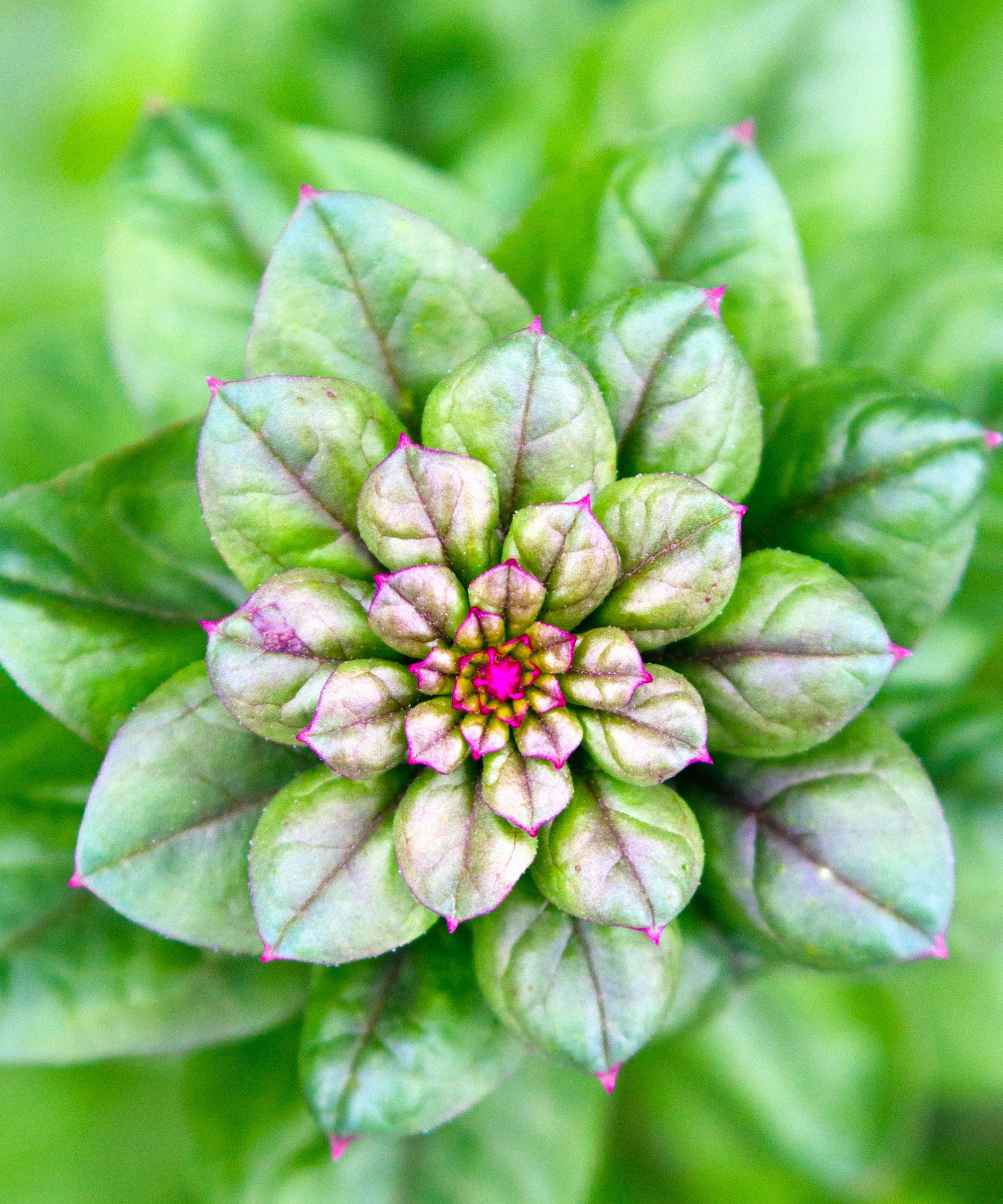
‘Red Veined’ spinach can be harvested at around 6-10 weeks
Spinach should definitely be on your to-do list for essential vegetables to plant in the fall. If you want to learn how to grow spinach at this time of year, choose a hardy cultivar and select a sunny spot, and you can reap the rewards well into winter. As Chris Bonnett points out, ‘If you harvest regularly, it may even last until early spring.’
Direct-sow in a drill 1in (2.5cm) deep, water and cover lightly with soil. Thin to 4-6in (10-15cm) apart, then just keep well watered. You can also sow in large containers. In hot spells, make sure plants benefit from some shade. Six to ten weeks later, harvest every alternate plant. Cut back to just above the base to encourage more leaves. Winter cultivars may need protection from October; cover with cloches and cold frames and protect with straw. Prevent spinach downy mildew with good spacing.
Grow autumn-sown varieties which have thicker leaves and are less inclined to bolt. Our favorite is ‘Mikado’, an F1 spinach. It produces excellent yields from multiple side-shoots. ‘Violin’ and ‘Amazon’ have strong resistance to bolting, while ‘Apollo’ and ‘Palco’ are resistant to downy mildew. Not forgetting gorgeous ‘Red Veined’ for dramatic color.
8. Cilantro (coriander)
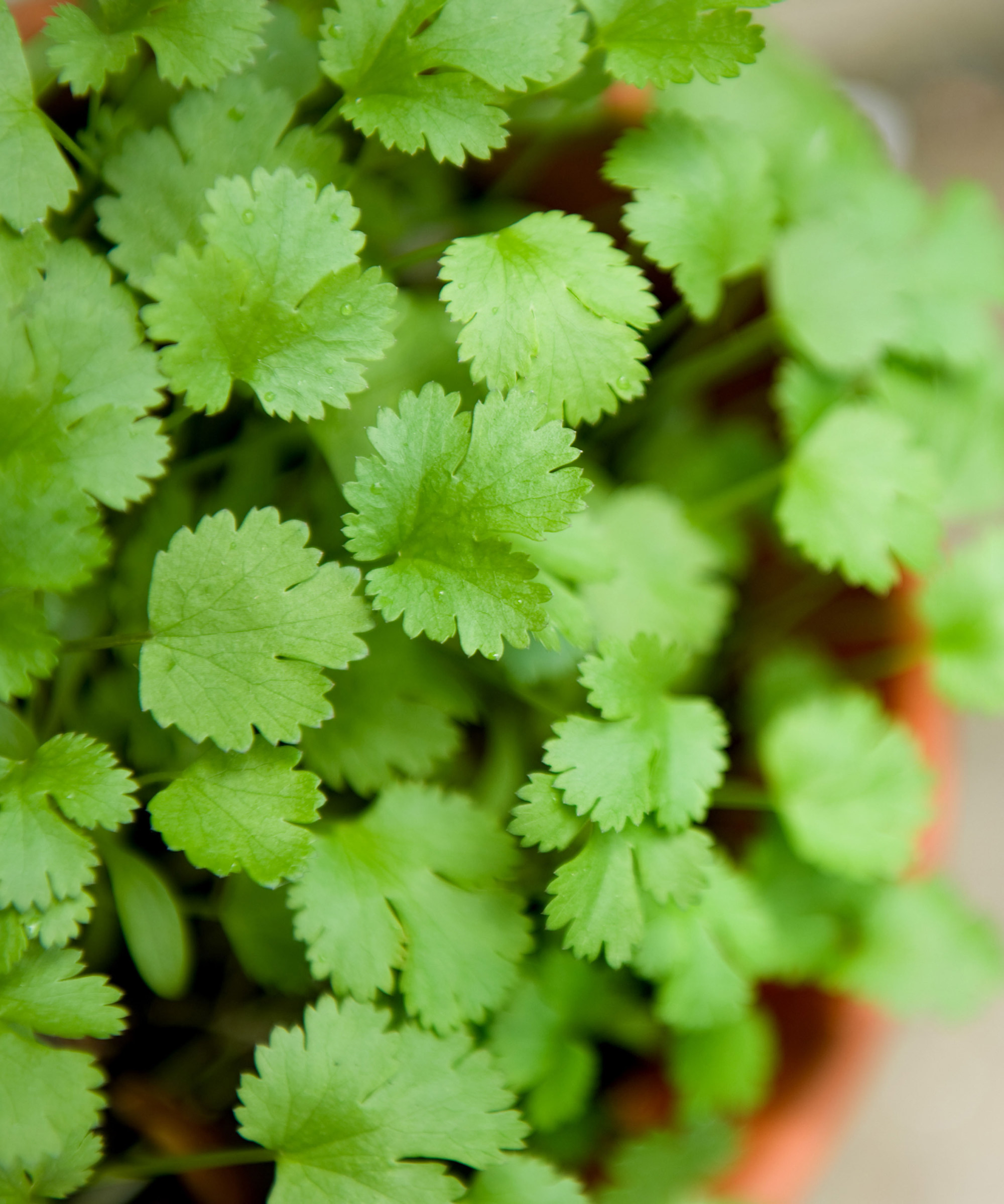
Start some cilantro now and cultivate an easy-to-grow oriental charmer with real staying power
Cilantro's fresh piquancy and healing properties make it an obvious entry in our list for September growing. It's easy to learn grow cilantro (also known as coriander) and it can be started from seeds in pots. Alternatively, sow direct and protect seedlings under cloches in well-drained soil.
Sow thinly in the ground or multi-celled trays or pots and cover lightly. Germination takes 7-20 days. Keep sowing every two weeks for a constant supply. Make direct sowings 1cm deep in rows 12in (30cm) apart. Keep moist, but don’t overwater and weed regularly. Cilantro can be harvested at 4-6in (10-15cm) tall and used on a cut-and-come-again basis. If you want to grow free seeds, leave a few plants to flower. Pick when ripe, before they fall to the ground. Place seed heads in a bag and hang upside down to dry, shake loose and store in an airtight container.
For an easygoing, fast-growing cilantro, try British-bred ‘Calypso’, finely cut ‘Confetti’ or vigorous ‘Leafy Leisure’. Or opt for a bolt-resistant variety such as ‘Santos’, ‘Slowbolt’ or ‘Indian Summer’.
9. Pak choi
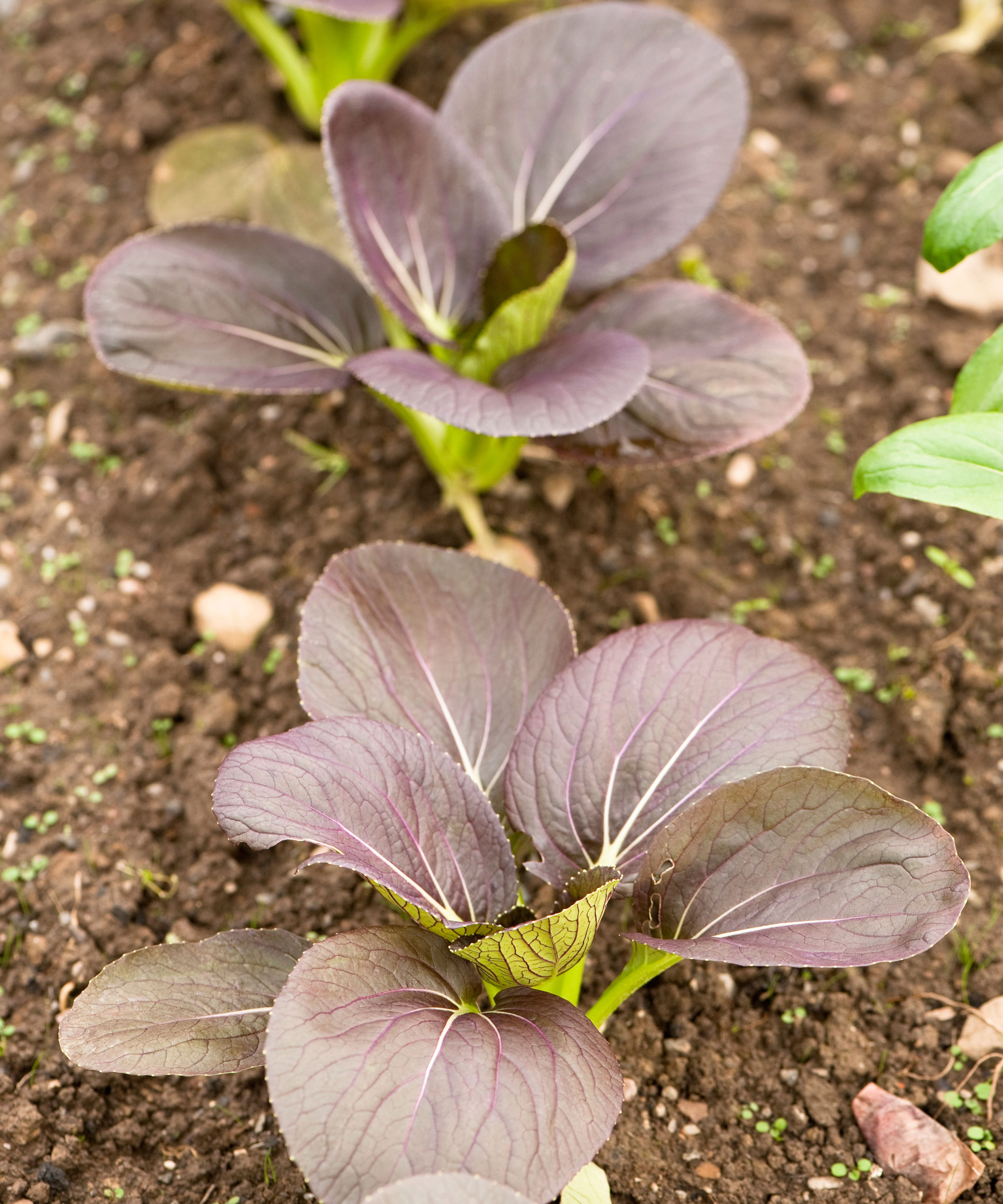
'Pak Choi Red' develops lush tones that get deeper in the cold
Plump, nutritious and fast-growing, pak choi is one of the essential vegetables to plant in September. It is well suited to shorter autumn days and its fat leaves make the most of what natural light is available. ‘You may not get massive rosettes, but a short, 3ft row will provide ample yield,' says Lucy. ‘Sow directly outside into moist soil. As temperatures fade later in the month, cover the rows with a cloche, which will also prevent the foliage turning leathery,’ she adds.
The trick when you grow pak choi is to avoid root disturbance and sow in situ. Plant four seeds at 12in (30cm) spacing, then thin to the strongest seedling. Keep well watered to avoid bolting. Watch out for holes in leaves, which could be a sign of flea beetles. Avoid this by growing plants under a fleece. Powdery mildew is another risk, but can be avoided by growing in cool locations. Harvest in as little as 30 days.
Great varieties include glossy 'Tatsoi Supi', crisp 'Joy Choi' and pretty 'Pak Choi Red'.
10. Pea shoots
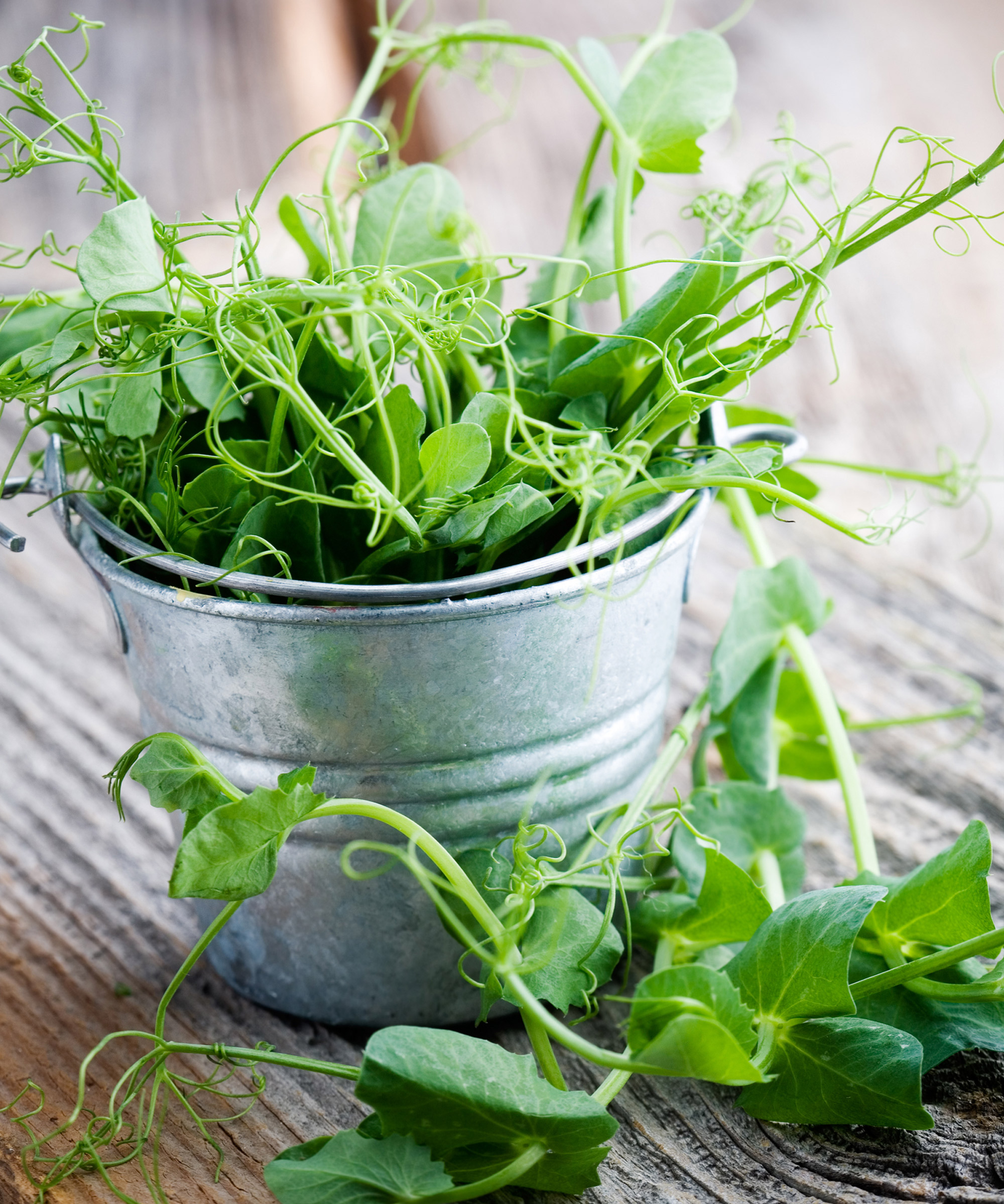
Pea shoots like these 'Anubis' from Suttons are probably the easiest crop you can grow in September
Delicate and tender yet bursting with flavor and nutrients, pea shoots are a top crop to start now and shoots are ready in weeks. Content in a cold frame or greenhouse, they are quick to grow and are some of the best vegetables to grow in raised beds as more space becomes available.
Grow outdoors in fertile, well-drained soil, sowing seeds an inch (2-3cm) apart. It’s also possible to cultivate pea shoots in containers in a greenhouse or tunnel. Make sowings 1in (2-3cm) deep. If you use containers, make them big; grow bags and larger trays are ideal. Place in a well-lit spot but avoid direct sunlight, and keep moist. Harvest with scissors an inch above compost level when plants are 6in (15cm) tall. Cut in clumps, allowing a reasonable amount of the plant to regrow.
Top varieties include compact ‘Meteor’ and prolific ‘Feltham First’. We also recommend ‘Twinkle’ for downy mildew tolerance. And for a crunchy nutrient boost, ‘Anubis’ produces shoots in three weeks, and you can enjoy a second picking a few weeks later. Perfect for that tasty vitamin boost!
11. Radishes
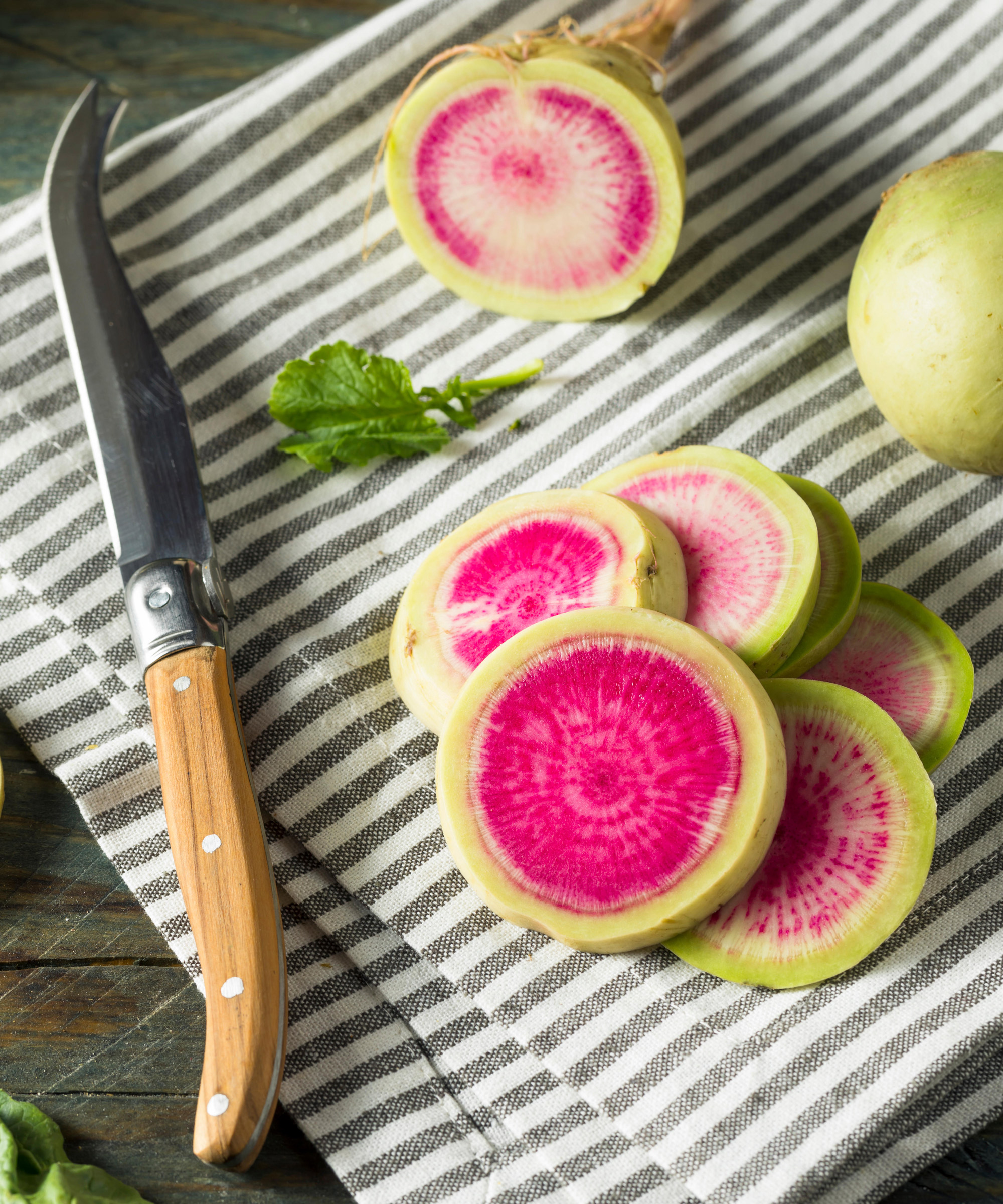
Watermelon radish is a striking bright pink heirloom variety that matures quickly
September is your last chance this year for growing radishes, so take advantage of this final push for crunchy croppers through autumn. Direct-sow in the ground or sow in containers. If sowing in the ground, make short drills 6in (15cm) apart and sow half an inch (1cm) deep. Sow summer radish seeds 1in (2.5cm) apart, and winter varieties 6in (15cm) apart. And keep the soil moist. As radishes are fast growers, try interplanting some between slower-growing veg like potatoes. You can harvest four weeks from sowing: these veggies are best eaten young.
Great varieties to try include sweet ‘Watermelon’ with its bright magenta flesh and peppery ‘China Rose’, which is cold-tolerant and can be left in the ground over winter. Not forgetting bold purple ‘Felicia’ with its slender roots, and ‘Rainbow Mix’, a colorful crunchy blend (both from Suttons).
12. Spring cabbage
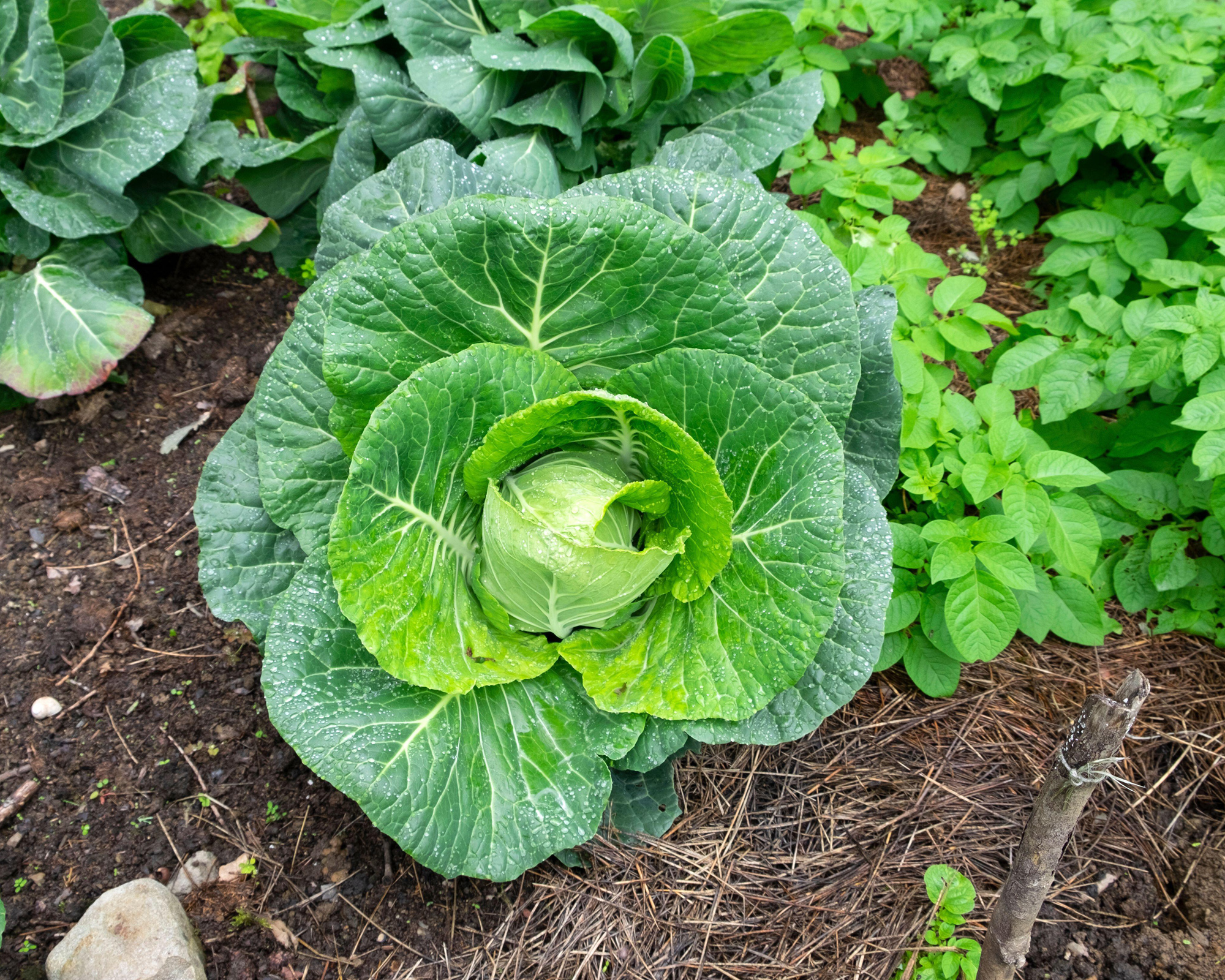
Spring cabbage 'Wheeler's Imperial' is a magnificent cropper and really low maintenance
Tasty, tender, nourishing and bulging with goodies like vitamin C, spring cabbage is a reliable staple for the kitchen garden – and September is the key time to start off crops for next year. Time to overwinter is crucial in order to produce those bulky heads. These magnificent croppers need to fill out a lot, and they take their sweet time doing it, although they do pick up the pace as the weather warms in spring.
Pick an open, sunny or semi-shaded spot with alkaline soil. Start some off both in modular trays and direct in the ground using a seed bed, to hedge your bets. Once planted out, give plants a soak every 8-10 days. As you see heads expand, water generously to improve bulk. You can pull up some crops as greens when the leaves are tender. Four to six months later, the main heads should be ready to harvest. Cut through the stem with a sharp knife just above ground level. For a bonus crop, cut a cross in the stump. You’ll get several small cabbages a few weeks later.
Great varieties include tender sweetheart ‘Wheelers Imperial’. Then there’s ‘Duncan’, with its dark upright leaves. ‘April’ is an early spring variety with compact heads. Last but not least, AGM winner ‘Pixie’ has a hard head, which allows for close plantings.
What else can I do for veg in September?
- With luck, you can harvest winter squash and pumpkins in October – so September is key for encouraging growth. To help skins set, cut off any leaves shading the fruits. Continual growth is key, so reduce the effect of cold nights by covering fruits with a thick blanket, says Lucy. Sustained watering is also crucial; little and often will keep growth consistent. Adding a high potash liquid feed to water will boost growth.
- If you have tried to grow carrots this year, September is a key time to thin them out. If you don’t, it might lead to congestion and erratic root size. Thin out the row to one healthy carrot every 0.7in (2cm). Reattach any insect-proof mesh as female root fly adults will be attracted by the smell.
- Tender tubers (yacon, oca, sweet potato and ulluco) need a long, hot spell to grow readily – many don’t start producing until late summer, says Lucy. The key is to keep the soil warm so the young tubers can bulk up to give a worthwhile yield. Good mulching materials include straw, scrunched-up newspaper and dried leaves. Lay around the roots of your crop, and cover over the plants with a cloche.
- If you're learning how to grow courgettes then September is the time to keep an eye out for powdery mildew. This is also a critical time to monitor cucumbers, which are a magnet for red spider mite. If you think you need to cut your losses, the best way to dispose of them is either on the bonfire or in the green waste.
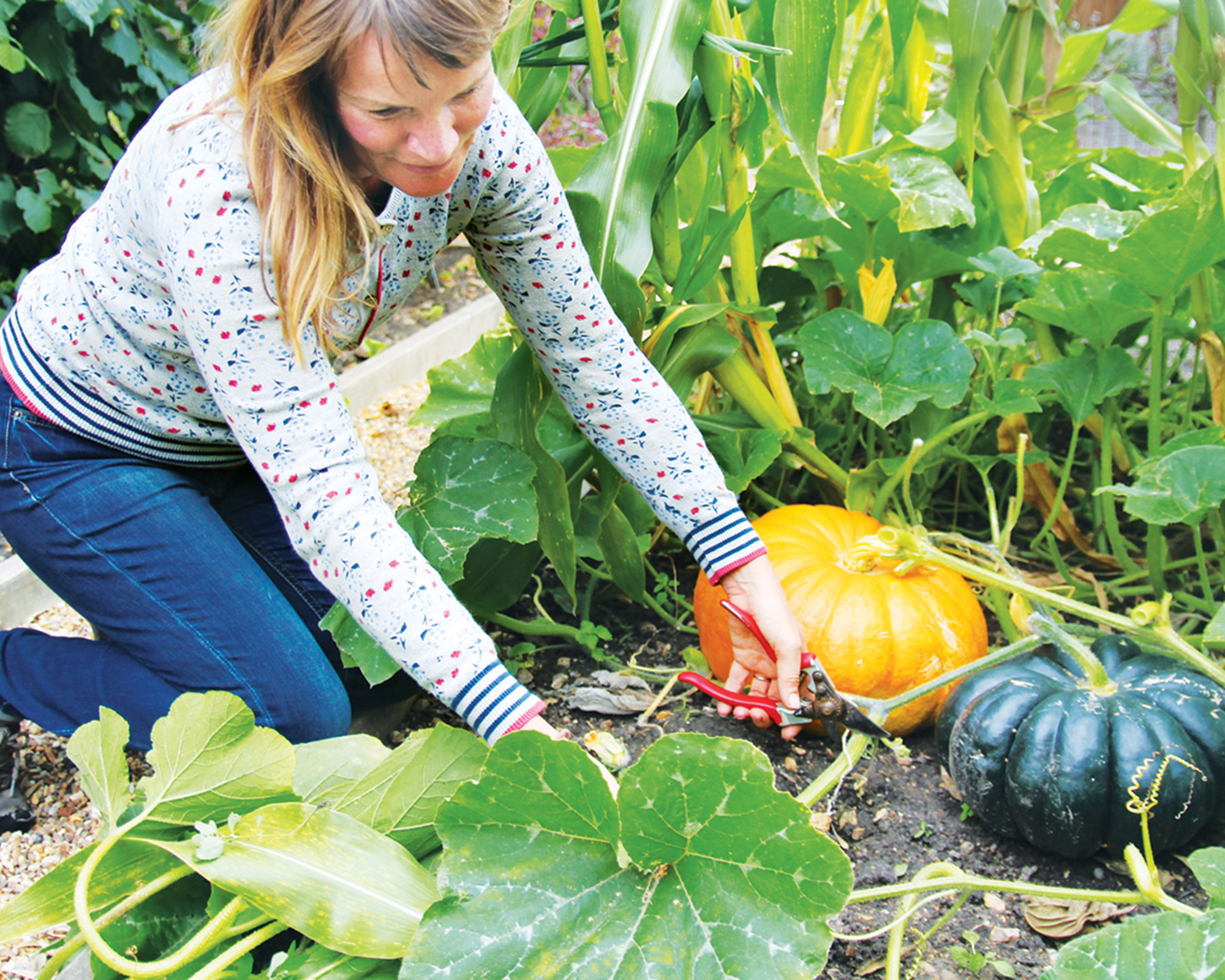
It's important to cut off the leaves shading the fruits of your pumpkin plant
Fruit jobs for September
- September is a good time to order new fruit bushes for planting in November-March. Organic expert Bob Flowerdew recommends buying a blackcurrant bush. To boost your returns, take a few cuttings from the main bush and root them in situ. Other options include red/white currants and gooseberries. Blackcurrants are also a good choice if you're interested in growing fruit in pots and containers.
- Owners of trained plums, cherries, gages, peaches, nectarines and apricots – take note, says Lucy. You must prune them by mid-September, or wait until next summer. Stone fruits must meet with secateurs while it is warm and dry. If pruned in winter, these trees become vulnerable to silver leaf fungus and bacterial canker infections.
- Didn't learn how to grow strawberries this year but want to give it a go next year? You still have time to plant up strawberry beds for next year. ‘Autumn plantings give bigger yields than spring equivalents,' says Lucy. ‘The plants make strong root growth and will be far more drought-tolerant if planted now than if you wait until March.’

As assistant editor of Amateur Gardening magazine, Janey's gardening passion was fostered from an early age, when her amazing mum had her deadheading hydrangeas, mulching roses, and propagating strawberry plants from runners for school open days. She's also taken part in lots of conservation and rewilding projects for the RHS and TCV as a way of exploring her horticultural horizons.
